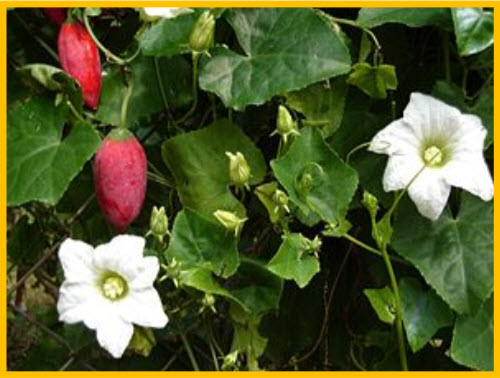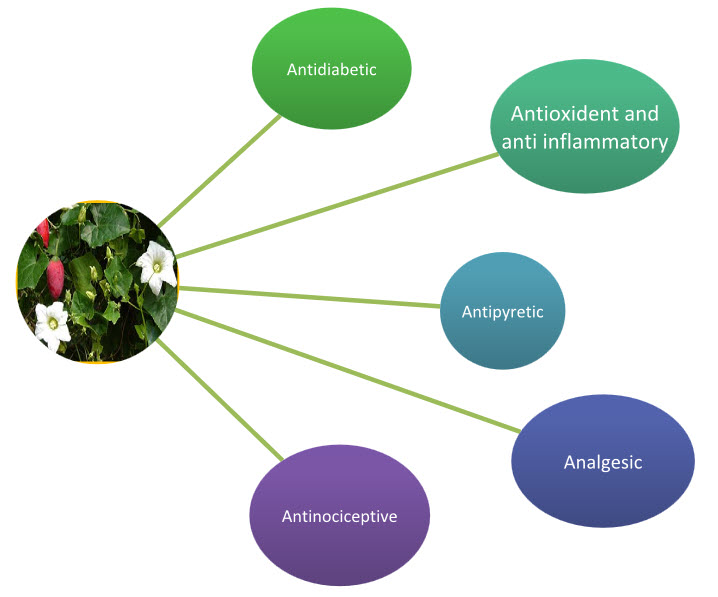About Authors:
Vivek P. Chavda
Department of Pharmaceutics, B.K. Mody Government Pharmacy College,
Rajkot – 360003, Gujarat (India)
vivek7chavda@gmail.com
Introduction
Plants had been used for medicinal purposes long before recorded history. Ancient Chinese and Egyptian papyrus writings describe medicinal uses for plants as early as 3,000 BC. Indigenous cultures (such as African and Native American) used herbs in their healing rituals, while others developed traditional medical systems (such as Ayurveda and Traditional Chinese Medicine) in which herbal therapies were used. Researchers found that people in different parts of the world tended to use the same or similar plants for the same purposes. In the early 19th century, when chemical analysis first became available, scientists began to extract and modify the active ingredients from plants. Later, chemists began making their own version of plant compounds and, over time, the use of herbal medicines declined in favor of drugs. Almost one fourth of pharmaceutical drugs are derived from botanicals. Recently, the World Health Organization estimated that 80% of people worldwide rely on herbal medicines for some part of their primary health care. In Germany, about 600 - 700 plant based medicines are available and are prescribed by some 70% of German physicians. In the past 20 years in the United States, public dissatisfaction with the cost of prescription medications, combined with an interest in returning to natural or organic remedies, has led to an increase in herbal medicine use.[1] There are many herbal products proved to be having good antidiabetic potential. Coccinia indica (Bimba, kanduri, Cucurbitaceae) is famous for its hypoglycemic and antidiabetic properties in Ayurvedic system of medicine. (See Fig. 1) Coccinia indica, the ivy gourd, also known as baby watermelon, little gourd, gentleman's toes, tindora or gherkin(inaccurately) is a tropical vine. It is also known as Cephalandra indica.[2] It is indigenous to Bengal and other parts of India. C. indicagrows abundantly all over India, Tropical Africa, Australia, Fiji and throughout the oriental countries. The plant has also been used extensively in Ayurvedic and Unani practice in the Indian subcontinent.[3] Seeds or fragments of the vine can be relocated and lead to viable offspring. This can occur when humans transport organic debris or equipment containing C. grandis. Once the ivy gourd is established, it is presumably spread by birds, rats, and other mammals. In Hawaii, it has been suggested that the fruit may be dispersed by pigs.[4]Long-distance dispersal is most commonly carried out by humans due to its culinary uses or by mistake. In certain parts of the U.S., the ivy gourd is known as Rashmato (singular) or Rashmati (plural). Some people have begun using the plural term Rashmatoes, since it is sounds more like potatoes or tomatoes. In parts of the Caribbean it is known as lizard food.
REFERENCE ID: PHARMATUTOR-ART-1915

Figure 1: Photograph of Coccinia indica (Adopted from flora-exotica)
Morphological Profile[5]
1. Leaves: Leaves are 5-10 cm, long and broad, bright greenabove, paler beneath, studded and sometimes rough withpapillae, palmately 5-nerved from a cordate base, often withcircular glands between the nerves, obtusely 5-angled orsometimes deeply 5-lobed, the lobes broad, obtuse or acute,apiculate, more or less sinuate toothed, petioles 2-3.2 cm.long.
2. Flowers: Male flowers: Peduncles are 2-3.8cm.long andsubfiliform. Calyx-tube is glabrous, broadly campanulateand 4-5 mm. long. Corolla is 2.5 cm. long, veined, pubescent inside and glabrous outside. Female flowers:Peduncles are 1.3-2.5cm. long. Ovary is fusiform, glabrous and slightly ribbed.
3. Fruits: Fruits are fusiform-ellipsoid, slightly beaked, 2.5-5by 1.3-2.5 cm. sized, marked when immature with white streaks, bright scarlet when fully ripe.
4. Seeds: Seeds are obovoid and rounded at the apex, slightly papillose, much compressed and yellowish grey.
5. Roots: The fresh root is thick, tuberous, long tapering,more or less tortuous with a few fibrous rootlets attached toit. Roots are flexible, soft and break with a fibrous fracture. A transaction of root shows circular outline and is characteristic of storage type. Parenchyma is full of starch grains and thorough permeation of parenchyma with vascular elements is observed. The cork is composed of rows of cells.
Cultivation
Coccinia indica is a well-known vegetable grown in the coastal which is high in nutritive value. The ripe fruit which is red in color is a well-known anti diabetic & is being exported to many countries for this purpose. Vegetable farming method is widely used for its cultivation. Both physical and chemical recommended for weed control. Hand-harvesting normally does not kill the plant but rather breaks the vine blankets into smaller pieces and the plant is able to reestablish when it touches the ground. These methods can make the infestation worse and further the need for more rigorous control methods. Picking the fruit and placing them in plastic bags can help decrease the seed back that is present with the soil. When utilizing chemical controls, that ivy gourd responded well to a thin-lined bark application of 100% Garlon 4 (triclopyr), leaving plants in place so as not to translocate the herbicide or spread the pest.[6, 7]
Chemical constituents
Plant contains resins, alkaloids, fatty acids, flavonoids and proteins as chief chemical constituents.Aspartic acid, Glutamic Acid, Asparagine, Tyrosine, Histidine, Phenylalanine And Threonine,Valine, Arginine are also found. The methenolic extract of fruit contains alkaloids,steroids, tannins, saponins, ellagic acid, phenols, glycosides, lignans and triterpenoids.[8] Roots containes Triterpenoid, saponincoccinioside, Flavonoid glycoside ombuin 3-o- arabinofuranoside, Lupeol, β-amyrin, and β- sitosterol and Stigmast -7- en-3-one.[9-11]
Medicinal uses
The plant has wide spread medicinal uses as shown in Fig. 2. Many clinical trial studies has proven effectiveness and safety of this plant parts and derived formulations for antidiabetic effect. Anti-inflammatory, analgesic and antipyretic activity of fruit and leaves were also found to be significant.

Figure 2: Medicinal use of Coccinia indica
1. Anthelmintic Activity
Methanol extract of Cocciniaindicafruits in the concentration of 50 mg/ml showed potent anthelmintic activity against Pheretimaposthuma. [12]
2. Antioxidant activity
Oral administration of ethanolic extract of Coccinia indica (leaf) extract (CLEt) (200 mg/kg body weight) for 45 daysresulted in a significant reduction in thiobarbituric acidreactive substances and hydroperoxides in rats.[13]
3. Anti-inflammatory, Analgesic and Antipyretic activity
Aqueous extract of Coccinia indica (leaves) producedmarked analgesic and antipyretic activity at 300mg/kg dosewhen compared with standard drugs (Morphine and Paracetamol). The extract also showed significant anti-inflammatory activity.[14] The activity was measured using tail flick model and yeast induced hyperpyrexia. The effect was equivalent to 25 mg/Kg dose of diaclofenac.
4. Antimicrobial activity
Petroleum ether and methanolic extract of Cocciniaindicashowed the highest antimicrobial activity against grampositiveorganisms(Bacillus Cereus, S Pyrogens and S aureus).[15]Ethanol and aqueous extracts of Cocciniaindica showedpromising antibacterial activity against the Enterobacteraerogenes, Pseudomonas aeruginosa, Staphylococcusepidermidis, Bacillus subtilis and Salmonella typhimuriumby agar well diffusion method and broth dilution method.
5. Antihyperglycemic activity
Chronic administration of CocciniaIndica (fruits) extract atdose of 200mg/kg for 14 days reduces the blood glucoselevel of the diabetes induced animals as compared todiabetic control group.[16] Dried extract of Whole plant was utilized. Ingredients present in the extract act like insulin, correcting the elevated enzymes G-6-P (ase), LDH in glycolytic pathway and restore the LPL activity in lypolytic pathway with the control of hyperglycemia in diabetes.[17, 18]
6. Hepatoproetcective activity
Cocciniaindica leave extract at dose 400 mg/kg bodyweight showed potent hepatoproetcective activity in albinorats.[19]Sylimarin was utilized as positive control. Reduction in SGPT and SGOT was observed.[20]
Conclusion
Coccinia indica is famous as marvel plant with immense antidiabetic potential. It possesses hypoglycemic, antidiabetic, hypolipidemic, hepatoprotective, larvvicidal, Anti-inflammatory, analgesic and antipyretic activities. Various phytoconstituents reported in C. indica are cephalandrol, tritriacontane, lupeol, b-sitosterol, cephalandrine A, cephalandrine B, stigma-7-en-3-one, taraxerone and taraxerol. Terpenoids are found to be responsible for antidiabetic activity. There are many patented formulations derived from Coccinia indica are now distributed increasingly all over the world.
References
[1] Herbal medicine. University of Maryland Medical Center 2013; umm. edu/ health/medical/altmed/treatment/herbal-medicine#ixzz2Z7AEwGNW 4.
[2] Porcher MH. Sorting Coccinia names. university of melborn 2006:8.
[3] Wealth of India. A dictionary of Indian raw materials and industrial products. Raw materia,New Delhi1992. p. 312.
[4] Artemis P, imopoulos S, Gopalan C. Plants in Human Health and Nutrition Policy: Karger Publishers; 2003.
[5] Kirtikar KR, Basu BD. Indian Medicinal Plant. Bishwas Singh, Nirali prakasan, Dehradun, 2005;2:1151-4.
[6] Invasive plant species: Coccinia grandis. Pacific Island Ecosystems at Risk 2003:Retrieved 10 February 2010.
[7] Wikipedia A. Coccinia grandis. enwikipediaorg/wiki/Coccinia_grandis Retrived on 7 july,2013.
[8] Tamilselvan N, Thirumalai T, Elumalai EK, Balaji R, David E. Pharmacognosy of Coccinia grandis: a review. Asian Pacific Journal of Tropical Biomedicine 2011:S299-S302.
[9] Vaishnav MM, Jain P, Jogi SR, Gupta KR. Coccinioside-K, triterpenoid saponin from Coccinia indica. Oriental Journal of Chemistry 2001;17:465-8.
[10] Vaishnav MM, Gupta KR. Ombuin 3-O-arabinofuranoside from Coccinia indica. Fitoterapia 1996;67:80.
[11] Khastgir HN, Choudhuri S, Sen P. Roots of Coccinia indica. Journal of the Indian Chemical Society 1958;35:905-6.
[12] Shivhare Y, Soni P, Singh P, Dangi S, Baghel S. Evaluation of Anthelmintic Activity of Coccinia indica (fruits). J Chem Pharm Res 2011;3:488-91.
[13] Venkateswaran S, Pari L. Effect of Coccinia indica leaves on antioxidant status in streptozotocin-induced diabetic rats. Journal of ethanopharmacology 2003; 84:163-8.
[14] Niazi J, Singh P, Bansal Y. Antiinflammatory, Analgesic and Antipyretic activity of aqueous extract of fresh leaves of Coccinia indica. Inflammopharmacology 2009;17:239-44.
[15] Syed ZS, Bolla K, Kandukuri V, Singara CMA. Antimicrobial activity of the fruit extracts of Coccinia indica. African Journal of Biotechnology 2009;8:7073-6.
[16] Gunjan M, Jana KG, Jha AK, Mishra U. Pharmacognsotic and Antihyperglycemic study of Coccinia indica. . International Journal of Phytomedicine 2010;2:36-40.
[17] Kuriyan R, Rajendran R, Bantwal G. Effect of supplementation of Coccinia cordifolia extract on newly detected diabetic patients. Diabetes care 2008;31:216-20.
[18] Singh N, Singh SP, Vrat S, Misra N, Dixit K, Kohli RP. A study on the anti-diabetic activity of Coccinia indica in dogs. Indian journal of medical sciences 1985;39:27-9.
[19] B. K, Shyam D, Gnanasekaran V, Jaishree KP. Hepatoprotective activity of Coccinia indica leaves extract. Int J Pharm Biomed Res 2010;1:154-6.
[20] Vinothkumar P, Sivaraj A, Elumalai EK, Senthilkumar B. Carbon tetrachloride-induced hepatotoxicity in rats-protective role of aqueous leaf extract of Coccinia grandis. Int J Pharm Tech Res 2009;1:1612-5.
NOW YOU CAN ALSO PUBLISH YOUR ARTICLE ONLINE.
SUBMIT YOUR ARTICLE/PROJECT AT articles@pharmatutor.org
Subscribe to Pharmatutor Alerts by Email
FIND OUT MORE ARTICLES AT OUR DATABASE









